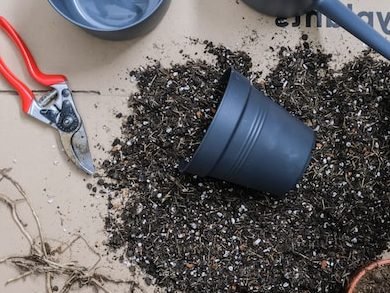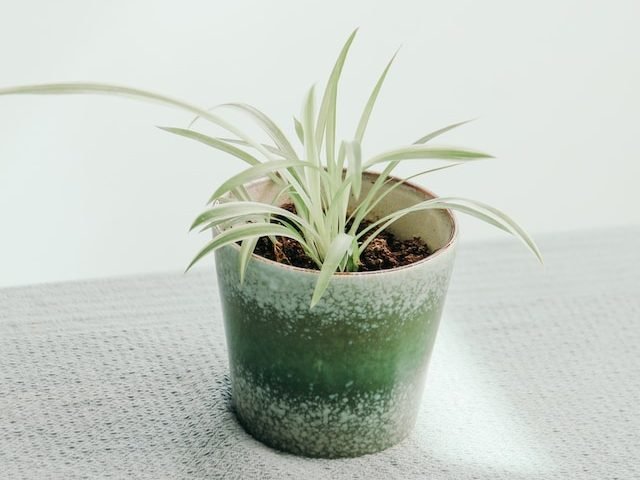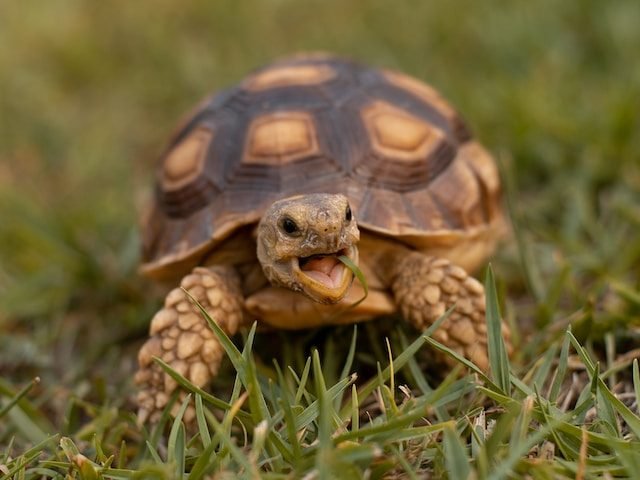
When the joyous holiday season rolls around, nothing quite lights up your home like a beautifully decorated and lit Christmas tree.
However, the sight of a once vibrant tree turning yellow can be quite frustrating! The yellowing of a Christmas tree, whether it’s a cut tree or a living one, is often a sign of certain issues that require your immediate attention.
Contents
Understanding the Yellowing of Your Christmas Tree
If you’ve ever asked yourself, “Why is my Christmas tree turning yellow?”, you’re not alone. This is a common concern among Christmas tree owners, and the reasons can be diverse. It could be due to natural processes, improper care, or pests and diseases. We will dive into the potential causes as well as treatments and preventative measures you can take.
Causes of a Yellowing Christmas Tree
A yellowing tree is usually a sign of stress or disease, which can occur due to a variety of factors. Understanding these causes can help to identify the issue and address it effectively. Here are the most common reasons:
Insufficient Water
The first and most common cause of a yellowing Christmas tree is insufficient water. Christmas trees, like all plants, need water to survive. If your tree isn’t getting enough water, it may start to yellow as a sign of dehydration. This is often a problem for cut Christmas trees, which are no longer able to draw water from the soil and rely solely on the water provided in their stands.
Make sure to give your Tree a lot of water when you first put it in its stand and then regularly monitor the soil moisture, topping it up when required.
Lack of Sunlight
Secondly, lack of sunlight could also be the culprit if your plant is still potted and rooted in soil. Christmas trees are coniferous and need a certain amount of light to maintain their green color. If they aren’t getting enough light, they may start to turn yellow.
Too much Sunlight
This isn’t so much of a concern for those of us that have Christmas land in winter time but for those who have Christmas in the peak of summer, too much direct sunlight can cause issues. If your Tree is being exposed to a lot of direct hot sun rays in the middle of the day and in the afternoon, it can cause parts of your Tree to dry out and turn yellow.
Exposure to Heat
Another common cause of yellowing in Christmas trees is exposure to heat. Trees that are placed near fireplaces, radiators, or other heat sources may begin to yellow. The heat dries out the tree, causing it to lose its vibrant green color.
Underfloor heating can also cause havoc for your Christmas Tree as the heat rising around the tree will dry it out fairly quickly.
Disease or Pest Infestation
Lastly, the yellowing may be a sign of disease or pest infestation. Certain diseases and pests can lead to discoloration in Christmas trees. These may require professional help to diagnose and treat but often there won’t be any way that you can quickly and easily stop the issue from spreading, unfortunately.
How to Fix a Yellowing Christmas Tree
1. Watering
The most common cause of a yellowing Christmas tree is inadequate water supply. The lack of water causes the tree to dry out, resulting in yellow needles. Therefore, the first remedy you should turn to is ensuring the tree is getting enough water.
- Watering schedule: Your Christmas tree needs a lot of water, especially in the first 24 hours after it’s been cut.
- Water temperature: Use slightly lukewarm water, as it is absorbed more easily than cold water but avoid hot water as this can burn the stem.
- Tree stand: Use a tree stand with a large water reservoir to maintain a constant water supply for the tree.
2. Placement
Where you place your Christmas tree also affects its health. Direct sunlight and heat sources can cause the tree to lose moisture quickly, leading to yellowing.
- Location: Keep your tree away from direct sunlight, radiators, fireplaces, and other heat sources.
- Humidity: Consider using a room humidifier to increase the humidity around your tree, especially if you live in a dry climate.
3. Fertilization
A lack of essential nutrients can also cause your tree to turn yellow. Using a suitable Christmas tree fertilizer can help resolve this issue.
Note: Over-fertilizing can also harm your tree. It’s recommended to only fertilize if your tree is in a pot and you plan to keep it for a long period of time.
4. Pruning
Pruning can help improve your tree’s health and appearance. Remove all yellow and brown needles to help the tree use its resources more efficiently.
- Use sharp, clean pruners to avoid causing unnecessary damage.
- Prune the tree when it’s cool, usually in early morning or late evening.
- Remove only the yellow and brown needles, leaving the healthy, green ones intact.
Remember, the goal is to have a healthy, green Christmas tree that you can enjoy throughout the holiday season. By following these steps, you can help combat yellowing and ensure your tree stays vibrant and fresh.
Preventing your Christmas Tree from turning yellow
While seeing your Christmas tree turn yellow can be a concerning sight, there are several preventive measures you can adopt to ensure the lush green color stays intact.
Proper Watering
The significance of watering your Christmas tree cannot be overstated. It’s essential to keep the tree hydrated, especially when it is first cut. Fill the tree stand with water immediately after setting it up, and make sure to refill it every couple of days (more in warmer, drier environments).
Temperature Regulation
Your Tree prefers cooler temperatures. Avoid placing the tree near heat sources, such as radiators, fireplaces, or hot air vents as these can speed up the drying process, leading to a yellowing tree and needles falling off.
Choosing the Right Tree
Choosing a healthy tree to start with can dramatically reduce the risk of it turning yellow. Look for a tree with deep green needles that don’t fall off when touched. Also, it’s best to buy from a reputable seller who has properly cared for their trees and has a faster turnover so that the trees are freshly cut, instead of standing around for weeks on end before they are sold.
Check for Disease and Pests
Several diseases and pests can cause a Christmas tree to yellow. Before you buy your Tree, check it for signs of infestations or diseases.
Use of Preservatives
Applying tree preservatives can help retain the tree’s freshness for a longer period. These can be purchased from a local garden center or online. Always follow the usage instructions provided on the package for best results.
When to throw away a yellowing Christmas tree
There are several indicators to look for to know when you should throw away a yellowing Christmas tree:
- Excessive Needle Drop: All trees will naturally lose a few needles here or there. However, if your tree begins shedding needles in large quantities, especially when touched or moved, it’s an indication that the tree is excessively dry and potentially a fire hazard.
- Brittle Branches: The branches of a healthy Christmas tree should be flexible. If they snap or break easily, it suggests that your tree is too dry. This dryness could lead to a fire if the tree is near a heat source or has lights on it.
- Yellowing Needles: While a few yellow needles are not a cause for concern, if the majority of your tree’s needles are turning yellow, it is likely dying. A tree in this condition will not only look unattractive but can also pose a fire risk.
- Unpleasant Odor: A fresh Christmas tree should have a pleasant, piney scent. If your tree has a foul or musty odor, it’s a sign that it’s not healthy. This smell could be due to mold growth, which can cause allergic reactions in some people.
Once your tree starts showing these signs, it’s time to consider removing it from your home. Not only can a dying or dead tree pose a fire hazard, but it can also negatively affect the health of those in your home.
Proper Disposal of Your Christmas Tree
Once you’ve determined that it’s time get rid of your Christmas tree, ensure you dispose of it properly. Many areas offer tree recycling programs after the holidays, turning old trees into mulch or wood chips.
Alternatively, some areas have designated drop-off locations where trees can be composted. Check with your local waste management facility, council or local government to find out the best way to dispose of your tree responsibly.
How to spot early signs of yellowing in your Christmas tree
Spotting the early signs of yellowing in your Christmas tree is crucial to addressing the issue while it’s still manageable. By keeping a keen eye on your tree, you can intervene before the yellowing becomes widespread.
Changes in needle color
Firstly, the most obvious sign is a change in the color of the needles. A healthy Christmas tree should boast vibrant green needles. If the needles start to turn yellow in small patches, particularly from the inner part of the tree and moving outward, this is a telling sign that your tree may be in distress.
Needle drop
Another sign to look out for is excessive needle drop. While it’s normal for some needles to fall off, especially when you first bring the tree home and set it up, a constant rain of needles from your tree is a warning that something is not right.
Brittle branches
Lastly, brittle branches can also signify a problem. If the branches of your tree are easily snapping or feel extremely dry to the touch, this could be a sign of dehydration, often a precursor to yellowing needles.
Temperature changes
It’s important to monitor any changes in temperature to see if it’s getting too warm for your Christmas Tree. This will help you spot any hotspots before it starts to dry out your tree! Place a digital thermometer next to your tree to keep an eye out.













